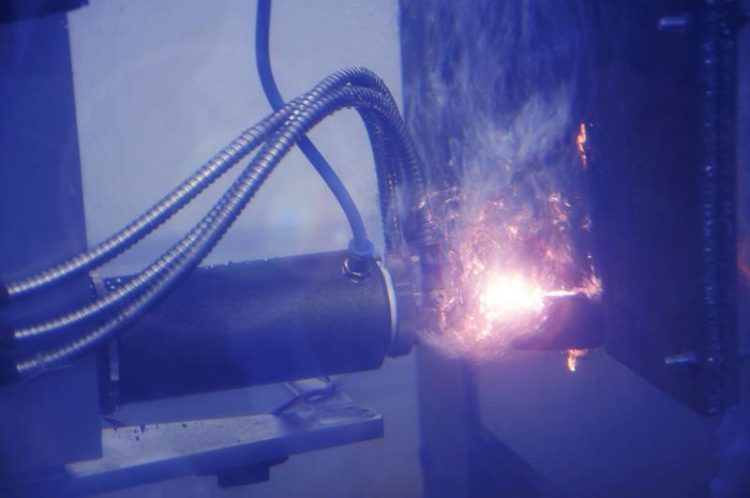Efficient reactor dismantling by laser beam cutting?

Underwater laser cutting offers enormous potential for the dismantling of reactor vessels. Photo: LZH
This new system is supposed to enable the direct dismantling of nuclear facilities (reactor pressure vessels). Laser beam cutting offers significant advantages compared to conventional cutting methods, such as water jet cutting or sawing techniques.
Above all, the binding of the kerf material on the exit side is a major advantage of the laser process. The expense for the final cleaning of the water basin floor is significantly reduced, as the amount of secondary or technology waste is significantly lower compared to water jet or sawing techniques.
The disposal of this waste is time-consuming and costly. In addition, sawing techniques are prone to jamming of the tool. This cannot occur with laser beam cutting. Thus, the process times could be shortened. The laser beam cutting would therefore represent a much cheaper alternative for the dismantling of the reactor components.
About AZULa:
The project “Automated separation of reactor pressure vessel installations using underwater laser technology” (AZULa) is carried out together with the Orano GmbH. AZULa is sponsored by the Federal Ministry of Education and Research (BMBF) under grant number 15S9408 by the project coordinator Gesellschaft für Anlagen- und Reaktorsicherheit gGmbH (GRS).
There are two figures for this press release.
Laser Zentrum Hannover e.V.
Dipl.-Biol. Lena Bennefeld
Abteilung Kommunikation
Hollerithallee 8
D-30419 Hannover
Germany
Tel.: +49 511 2788-238
Fax: +49 511 2788-100
E-mail: l.bennefeld@lzh.de
Internet: www.lzh.de
Media Contact
All latest news from the category: Process Engineering
This special field revolves around processes for modifying material properties (milling, cooling), composition (filtration, distillation) and type (oxidation, hydration).
Valuable information is available on a broad range of technologies including material separation, laser processes, measuring techniques and robot engineering in addition to testing methods and coating and materials analysis processes.
Newest articles

Red light therapy for repairing spinal cord injury passes milestone
Patients with spinal cord injury (SCI) could benefit from a future treatment to repair nerve connections using red and near-infrared light. The method, invented by scientists at the University of…

Insect research is revolutionized by technology
New technologies can revolutionise insect research and environmental monitoring. By using DNA, images, sounds and flight patterns analysed by AI, it’s possible to gain new insights into the world of…

X-ray satellite XMM-newton sees ‘space clover’ in a new light
Astronomers have discovered enormous circular radio features of unknown origin around some galaxies. Now, new observations of one dubbed the Cloverleaf suggest it was created by clashing groups of galaxies….





















